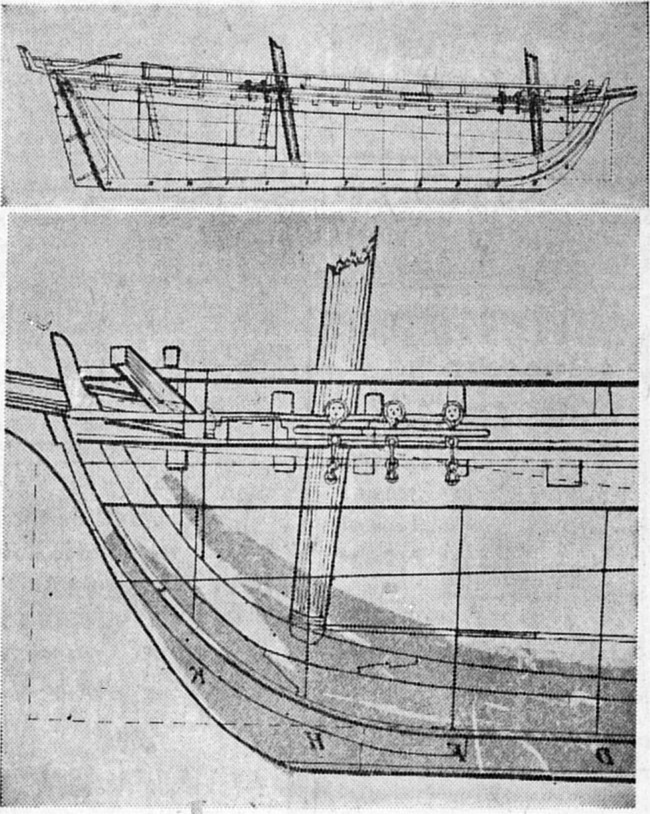Found – H.M.S. Newash?
Toronto Telegram, 5 Sep 1953
Schooner Days MCXXI (1121)
By C.H.J. Snider

Penetanguishene’s resurrection operation of Saturday, Aug. 29, was carried out on the spot where, forty years before, the late H. C. Osborne of that town showed me the sunken hull of a man-of-war which he identified as HMS Newash. Within a few hundred feet then lay the wreck of another man-of-war, which he identified as HMS Tecumseth.
Newash, Naawash, and Naiwash – white men spelled red men’s names variously – was a great chief of the Ottawa nation. He was in Toronto Feb. 16, 1814, and was forwarded thence, with other important Indian potentates, to the Governor General at Quebec, for conference. The immediate result was that his name was given to the newest fighting machine on the Great Lakes, a compact, heavily-armed vessel – two heavy long guns, 24 pounders, and two light carronades, 32 pounders for smashing broadsides at close quarters. The name of the great Tecumseth, a Shawanoe, was bestowed upon a sister spitfire of similarly heavy armament. The sisters were built side by side on Street’s farm at Chippewa, Ontario, above the Falls of Niagara. They could take care of themselves anywhere. They were double the tonnage and armament of the U.S.S. Scorpion. When they were launched the Scorpion was already a British prize, renamed HMS Confiance.
Schooner Days has a photostat of the Admiralty plans of the Newash and Tecumseth. It is inscribed:
"Naval Yard, Street’s Farm, Chippawa, 23 April, 1815. A Draught of two schooners, the Tecumseth and Newash”
and it gives their dimensions and construction details. A tracing ,of this plan, laid over the photograph of the recovered wreckage on the same scale, fits perfectly upon the recovered keel and forefoot. The deadwood of the latter is made up of four or five pieces of heavy oak, scarphed together and through fastened with long bolts. Decay of a century has eaten a way parts of these, but the remains correspond accurately to the members shown in the Admiralty plan, both in shape and position.
Coincidence? Can it be that the searchers hunted in the wrong place for the captured 96- ton U.S. Scorpion, renamed HMS Confiance, and found one – or two – equally interesting contemporary British men-of-war, the Canadian built HMS Newash, and – or HMS Tecumseth, each of which measured 166 tons.
This we now leave to The Jury by whom is meant the indefatigable Prof. Wilfred Jury, Western University’s great archaeologist. Great we properly call him, without intention of flattery or comparisons. Front line soldier of research, his pick and shovel, patience, perseverance and perspiration, have alike enthused and interested Canadian university students and Canadian dredge hands, in the history of our own country lying under our own noses.
[Transcrbed G.B.M, 24 August 1976.]
